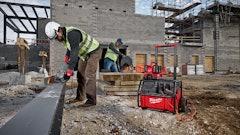
How many times have you put together what you thought was a home-run bid? The sales presentation went off without a hitch. Your references received calls from your new prospective client. But then a few days pass … and then a few weeks. The next thing you hear is that your competitor's truck is on the jobsite! What happened?!
Well, the client must have found (at least in their mind) a better solution to their problem. Your competitor did a better job of selling their value and positioning you out of the running.
How can you prevent this from happening in the future? Understand your three main types of competitors and have a strategy to compete against each.
1. The Incumbent
To compete against the company that had the job last year, you need to learn some things about the competitive situation.
Conduct a thorough interview with the client to identify the following:
- Which services are included in the contract
- If any dissatisfaction exists with the present contractor
- Learn about key employees of the client.
Then you want to dig even deeper. If there has been a problem, talk about when it happens, how often, and the ramifications it has on the overall health of the property. You might even want to observe the incumbent contractor as he services the property. Watch how his crew functions and look for "weaknesses" you could exploit, such as poor equipment and/or operation, lack of safety, overall crew sloppiness, etc.
Don't "attack" the incumbent in your sales pitch, though. Instead, have a conversation with the client that is based on the weaknesses you'd observed; this is fact, not mudslinging. You may then want to invite the client to observe the incumbent contractor him or herself.
2. The Local or Regional Force
This competitor probably gives you the most trouble because they know your strengths and weaknesses better than you do. Their prices are similar, as is the perception of their quality and customer service.
Help the client identify ways to receive greater benefit from your service. Be proactive in suggesting concepts, improvements, new ideas, and changes to service levels or contract terms that will benefit the client. Pass along savings without being asked to. Listen carefully for needs that the local or regional forces are either unwilling or incapable of addressing. Express a genuine desire to win the client's business through performance and quality.
3. The National Force
These big companies might be intimidating, but they're often the easiest to compete against. Many have lost touch with their customers, and have gotten too big and impersonal to respond to local needs. They are run by managers who are often out of touch and several levels removed from the actual day-to-day operations.
Ask the prospective client to call the national force's hotline to see how difficult it is to get a hold of the right person. Encourage the client to ask the national force for a list of, say, five clients who'd terminated their service in the past three years. You might even want to advise the client to put that requirement in the bid package.
Continually remind the client that you are a local company focused on local clients—period.



























